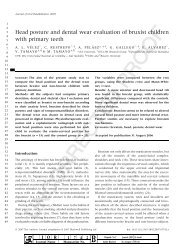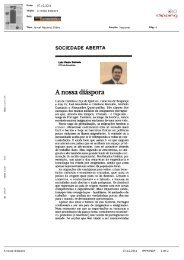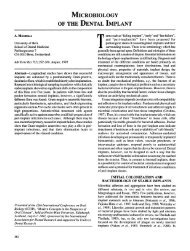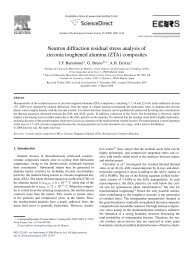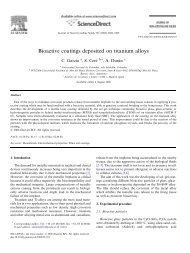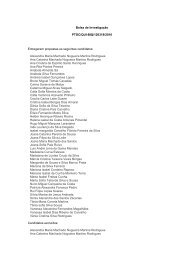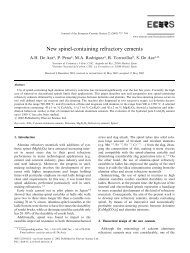Untitled - IBMC - Universidade do Porto
Untitled - IBMC - Universidade do Porto
Untitled - IBMC - Universidade do Porto
You also want an ePaper? Increase the reach of your titles
YUMPU automatically turns print PDFs into web optimized ePapers that Google loves.
ORAL COMMUNCATION 11<br />
Detection of lead toxicity by morphological parameters and ISSR markers<br />
in Lactuca sativa L.<br />
Patrícia Silva 1 , Manuela Matos 1 , Sónia Silva 2 , Conceição Santos 2 , and Olinda Pinto-Carnide 1<br />
1 Institute for Biotechnology and Bioengineering, Centre of Genomics and Biotechnology, University of<br />
Trás-os-Montes and Alto Douro (IBB/CGB-UTAD), PO BOX 1013, 5001-801, Vila Real, Portugal; 2 CESAM<br />
and Department of Biology, Laboratory of Biotechnology and Cytomics, - University of Aveiro, Campus<br />
Universitário de Santiago, 3810-193 Aveiro, Portugal<br />
Toxic heavy metal pollution has become an increasing worldwide environmental problem<br />
since the onset of the industry revolution. Lead (Pb) is a nonessential metal and has<br />
significant ecological relevance in many studies, since it is one of the most severe<br />
pollutants. This metal induces a broad range of toxic effects to living organisms, including<br />
morphological, physiological and biochemical alterations. Additionally, plants that grow in<br />
contaminated soils can absorb and accumulate Pb, thereby introducing the metal into the<br />
food chain by trophic transfer, including in the human diet.<br />
In this study, plants of the cultivar “Reine de Mai” (Lactuca sativa L.) were grown<br />
hydroponically with Pb (0, 0.05, 0.5 and 5ppm), during a 14-days exposure period, in<br />
controlled conditions. Morphological characters including roots and shoot biomass and<br />
length were recorded in four plants of each concentration. The genotoxicity effect of Pb<br />
was evaluated in the roots of the same plants using ISSRs (Inter Simple Sequence Repeats)<br />
for DNA changes analysis.<br />
In general, both shoot length and biomass decreased with increasing Pb concentration.<br />
Comparing with control condition, we observed an increase in the roots biomass and length<br />
for the concentration of 0.05 ppm, and a decrease in the others concentrations.<br />
The DNA damages in plant roots were analysed with eight ISSR primers. The differences in<br />
DNA patterns were evaluated by the presence or absence of bands in treated samples,<br />
compared with the untreated. On average, the rate of polymorphism increased with the Pb<br />
concentration.<br />
The present study shows the environmental risk of Pb on plant growth since it affected the<br />
length and biomass of the roots and shoots of this lettuce cultivar. The comparison<br />
between ‘untreated’ and ‘treated’ plants showed that ISSR analysis can be used to evaluate<br />
how the environmental pollutants modify the structure of DNA in lettuce and this method<br />
seems to be a useful tool for measuring genotoxic activity due to environmental pollutants.<br />
Acknowledgements: This research was supported by FCT project (FCT/PTDC/AAC-AMB/112804/2009)<br />
and fellowship (SFRH/BPD/74299/2010)<br />
29




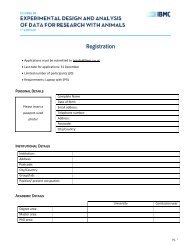

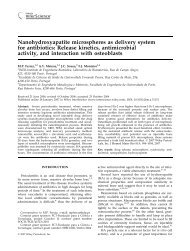
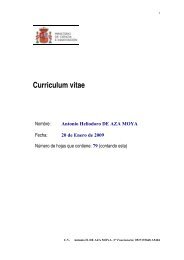
![registration form - download [pdf] - IBMC](https://img.yumpu.com/22442689/1/184x260/registration-form-download-pdf-ibmc.jpg?quality=85)
